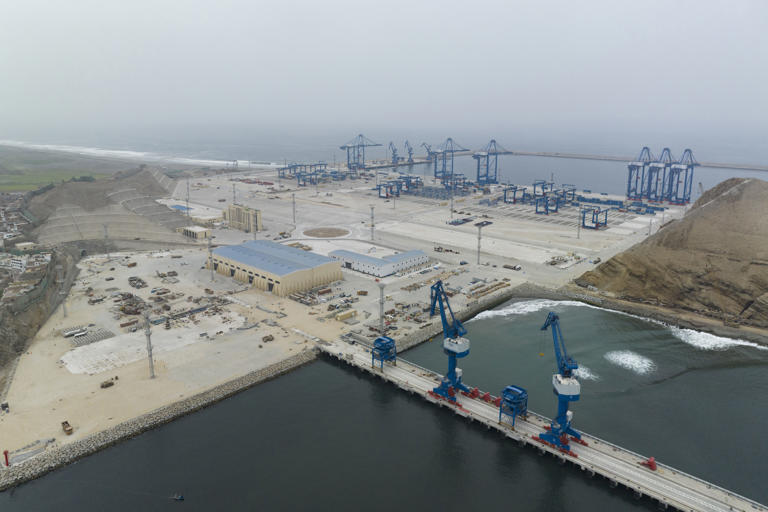
US concerns about the $3.6 billion Chinese-funded Chancay Port Project in Peru
PERU : Chinese President Xi Jinping inaugurated Peru’s Chancay Port on Thursday (November 14), describing it as the starting point for a “new land-sea corridor between China and Latin America”.
Funded under China’s Belt and Road Initiative (BRI), the massive $3.6 billion project has also raised concerns in US policymaking circles over Chinese influence in a region traditionally seen as its backyard.
Apart from its geopolitical implications, the deep-sea port has been billed as a game-changer for South America. A 2023 article in The Diplomat said, “One of the most outstanding features of the Chancay New Multipurpose Port Terminal is its capacity to receive vessels of up to 18,000 TEUs (Twenty Foot Equivalent Units), the largest shipping vessels in the world. To date, no vessel of this size has not arrived in Latin America. This capacity will position Chancay as a strategic port on a global scale.”
Chinese media also reported that the port will reduce the transportation time of goods exported from Latin America to the Asian market from 35 days to 25 days, greatly reducing logistics costs and generating jobs. “The port is expected to generate $4.5 billion in annual economic benefit for Peru, equivalent to 1.8 percent of the country’s GDP,” a Global Times editorial said.
Key trade items here include copper, blueberries and soybeans. Crucially, Bolivia, Chile and Argentina also form the “lithium triangle” together. The element is in great demand over the lithium-ion batteries used to power the growing numbers of Electric Vehicles worldwide. A report from the International Energy Agency noted that more than one in three new car registrations in China was electric in 2023, compared to over one in five in Europe and one in 10 in the United States.
What are the US concerns over Chancay?
Media reports have quoted several US officials flagging the project recently. In June, The Wall Street Journal quoted Army General Laura Richardson, former head of the U.S. Southern Command, saying, “This will further make it easier for the Chinese to extract all of these resources from the region, so that should be concerning.”
Also Read | What is the Partnership for Global Infrastructure Investment, seen as Western counter to BRI?
Brazil, the largest economy in the continent, has announced plans to enhance its road connectivity to Chancay. The South China Morning Post also quoted Erik Bethel, a former US representative at the World Bank during Donald Trump’s previous presidency, speaking at a conference this May. He said, “Wait until the port of Chancay in Peru gets connected to Brazil. That’s going to be a wake-up call for all of us.”
For long, the US has remained the major player in the region, delivering aid and loans but also interfering with the continent’s governments. In line with its “containment” policy during the Cold War, it sought to prevent the expansion of Communist ideology. The continent’s resources, such as oil and precious metals, were also an incentive for extending its influence.
While the US remains South America’s biggest trade partner, China has increasingly made inroads in the continent as its own economy has grown. “China is Peru’s largest trade partner, largest export market, and largest source of imported goods, while Peru is China’s fourth largest trade partner in Latin America,” Global Times noted.
Some experts also believe China has taken advantage of the US shifting its foreign policy focus on other regions of the world, such as the Middle East and Europe. But in South America, this is not seen as a necessarily bad thing.
According to WSJ, Peru’s Foreign Minister Javier González-Olaechea said that if the US was concerned about China’s growing presence in Peru, then it should step up its investments. “The United States is present almost everywhere in the world with a lot of initiatives, but not so much in Latin America,” González-Olaechea said in an interview. “It’s like a very important friend who spends little time with us.”
With the incoming Trump presidency, given his recent mentions of the region largely for curbing illegal immigration to the US, there is again concern about US focus shifting away, paving the way for Chinese presence.
Larger BRI concerns
Critics have questioned the ambitious economic benefits projected from BRI works undertaken across the global south. For instance, China-funded several train connectivity projects in Southeast Asia have seen revisions made to their original high costs and have been delayed.
Advertisement
